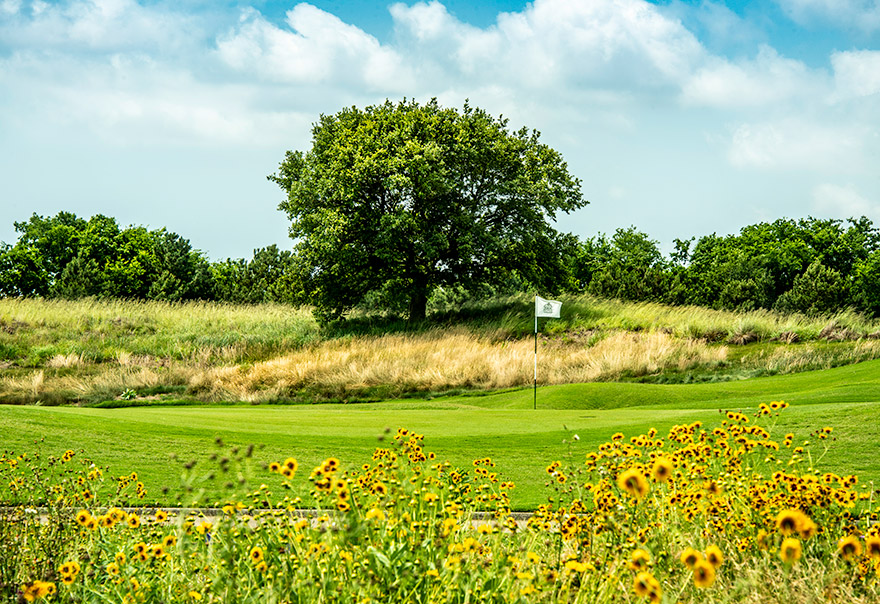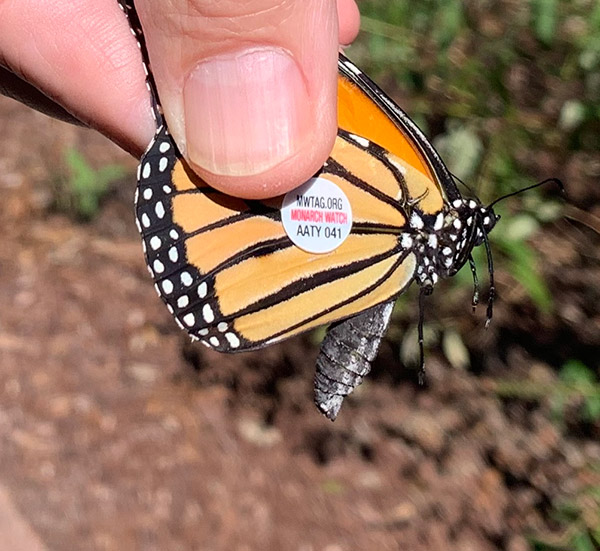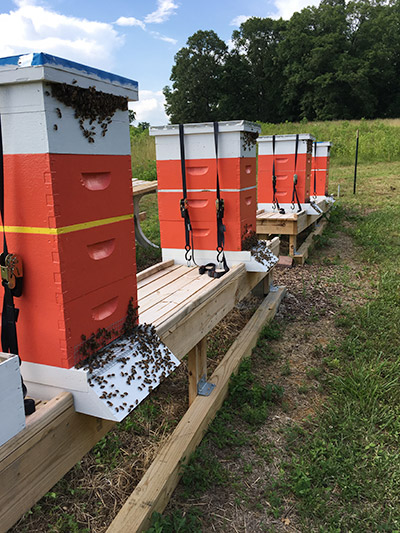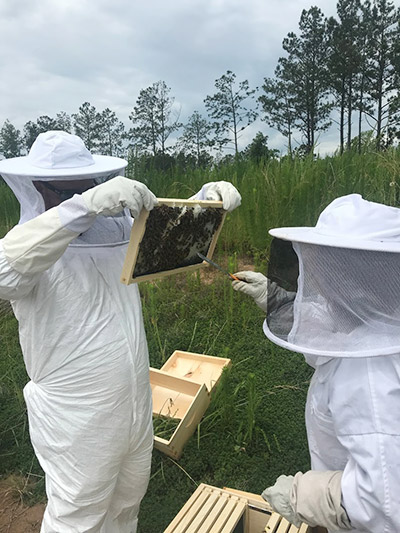9 Pollinator Protection
Pollination is an essential need for seed-bearing plants. Of the 1,400 crop plants grown around the world, almost 80% require pollination by invertebrates or animals. Pollinating visits from bees and other insects, birds, bats, etc., are a critical component of a stable food supply. In the United States alone, pollination of agricultural crops is valued at billions of dollars annually.
Many pollinator species have experienced significant population declines over the last several decades. While a number of factors have contributed to this decline, the most critical may be habitat loss, largely from large scale agricultural operations and urbanization. The monarch butterfly (Danaus plexippus) is an example of one of a pollinator species that resides in Virginia for part of the year that has experienced habitat loss throughout its range. Other issues, such as colony collapse disorder of bee species have also exerted pressure on pollinator populations. Human interaction and the indiscriminate use of certain pesticides is also a factor influencing pollinator populations and biodiversity.
Golf courses are an ideal opportunity to re-establish pollinator habitat and can offer food, nesting, and water resources to meet the needs of pollinators. In addition to enhancing or creating pollinator habitat, superintendents need to be mindful of the potential impact of the use of pesticides on pollinator health. However, superintendents can maintain high quality turf on playing surfaces while protecting pollinators by being mindful of the potential impact of pesticides by using IPM methods, following label requirements related to pollinators, and implementing BMPs that protect pollinators.

9.1 Regulatory Considerations
Pollinator protection language is a requirement for pesticide labels, and following the label is mandatory. Pesticide applicators must be aware of honey bee toxicity groups and be able to understand precautionary statements. In addition to following legal requirements, pesticide applicators should understand the effects of pesticides on bees and other pollinators and the routes of potential exposure.
The USGA publication Making Room for Native Pollinators, U.S. Department of Agriculture’s Forest Service and Pollinator Partnership publication Bee Basics: An Introduction to Our Native Bees, and VCE’s publication Native and Solitary Bees in Virginia provide basic facts about pollinator biology that are useful to pesticide applicators. In addition, record keeping may be required by law to use some pesticides. Many of the IPM best management practices, such as record keeping, are valuable tools for protecting pollinators.
Some golf courses maintain beehives onsite as a way to increase their environmental stewardship efforts. VDACS has formulated Virginia’s Voluntary Plan to Mitigate the Risk of Pesticides to Managed Pollinators with voluntary guidance on protecting pollinators in the state.
9.2 Pest Management Practices
Protecting pollinators on the golf course does not preclude the use of pesticides, but instead minimizes any potential impact from these chemicals. Pesticide applicators must use appropriate tools to help manage pests while safeguarding pollinators, the environment, and humans. Using IPM best management practices is an important key to protecting pollinators because they reduce pesticide usage and minimize the potential of exposure. Superintendents can utilize IPM best management practices for turf that protect pollinators by following these simple steps:
- Identifying what is truly a pest. (For example, solitary ground-nesting bees and wasps might be alarming, but most are harmless.)
- Setting higher weed thresholds in low-use areas.
- Monitoring bee activity to avoid applying pesticides during peak activity times (i.e. apply pesticides in the early morning or evening).
When the use of pesticides is necessary, being mindful of pollinators includes selecting chemicals with low toxicity to bees, short residual toxicity, or properties repellent to bees; using caution when applying near flowering plants, including flowering weeds (mow first whenever possible); and avoiding drift. Tables of pesticides based on relative toxicity to honey bees can be found on pp. 32 to 34 of Chapter 1 in the 2020 Pest Management Guide: Horticultural and Forest Crops, VCE.
Pesticide applicators are also encouraged to check the Virginia BeeCheck website, which is an online mapping system providing apiary location and beekeeper contact information. All applicators applying pesticides outdoors are encouraged to sign up for free access to the system.
9.3 Preserving and Enhancing Habitat on the Course
Habitat for pollinators includes foraging habitat with food sources for the various stages of pollinators’ lifecycles, nesting sites, and water sources. Increasing habitat to meet pollinator needs can be accomplished simply by adding to existing plantings or through more intensive efforts to establish a larger native area. Pollinator habitat on the golf course includes existing out-of-play areas (such as buffer strips around water courses and bodies of water) and areas renovated specifically with pollinators in mind that include native plants, wildflowers, and flowering trees and shrubs, nesting sites, and water sources.
To convert an existing out-of-play area to a new native area, site preparation is key and may require more than one season of effort to reduce competition from invasive or other undesirable plants prior to planting. For more information on establishing a native area, see the USGA publication Making Room for Native Pollinators. For information on plant selection in the mid-Atlantic that specifically includes plants for monarch butterflies, a species in decline, see the Monarch Nectar Plants: Mid-Atlantic and the Monarchs in the Rough website.
Pollinator-friendly habitat contains a diversity of blooming plants of different colors and heights, with blossoms throughout the entire growing season. An ideal plant mix consists of nine species: three that bloom early in the season, three in mid-season, and three in late season. Native plants are best for providing the most nutritious food source for native pollinators. Though wildflowers are most often thought of as pollinator-friendly plants, grasses, sedges, forbs, shrubs, and trees also provide habitat. For example, many sedge species are larval hosts; hollow stem grasses provide nesting habitat; and sturdy grasses shelter insects from harsh weather. Herbs also can be beneficial to bees and other pollinators. For example, borage is an underutilized herb that is extremely attractive to pollinators. Milkweed provides habitat specifically for monarch butterflies.
The Xerces Society provides information on plants and plant mixes for pollinators appropriate for the mid-Atlantic in Pollinator Plants: Mid-Atlantic Region.
Providing nesting sites for native species can be accomplished by taking simple steps in out-of-play areas, such as:
- Leaving exposed patches of bare soil, surrounded by erosion-trapping vegetation.
- Leaving dead trees, stumps, and posts.
- Planting hollow stem grass species.
- Creating stem bundles of hollow plant stems like bamboo.
- Creating bee blocks for solitary nesters such as mason and leafcutter bees.
- Creating artificial boxes for bumble bees.
Bee boxes can be purchased or constructed following simple instructions. The USGA publication Making Room for Native Pollinators offers instructions for constructing a simple bee box.
A clean, reliable source of water is another essential habitat consideration for pollinators. Pollinators can use natural and human-made water features such as running water, pools, ponds, small containers of water, and mud puddles. Water sources should have a shallow or sloping side so the pollinators can easily approach the water without drowning. In addition, irrigation management practices that preserve ground-nesting pollinators include irrigating at night and avoiding flooding any areas.

9.4 Managed Hives
Hosting honey bee hives on the golf course provide bees with valuable green space, especially in urban areas, and can be a positive public-relations tool. If embarking on this effort, consider:
- Partnering with an experienced local beekeeper. Proper beekeeping is time and knowledge intensive. If not partnering with an experienced beekeeper, superintendents or other responsible staff should attend a beekeeping course.
- Ensuring enough food sources are available for both honey bees and wild pollinator species.
- Placing hives away from areas where golf course workers or golfers are active to avoid stings.
- Facing the hive exit in a direction away from in-play areas of the course.
- Educating golfers via explanatory signs, newsletters, and sales of honey and other bee products.
- Calling in an experienced beekeeper if disease or parasites are suspected in order to identify and mitigate any health issues.


9.5 Pollinator Protection Best Management Practices
Pest Management Practices
- Before applying a pesticide, inspect the area for both harmful and beneficial insect populations, and use pesticides only when a threshold of damage has been indicated.
- Consider biological control agents, lures, baits, and pheromones as alternatives to insecticides for pest management.
- When pesticides are needed, select those with a lower impact on pollinators, such as chlorantraniliprole.
- If a granular formulation will control the pest, choose it over liquid formulations. Granular versions of pesticides are known to be less hazardous to bees.
- Restrict applications to early morning or evening when pollinators are not as active.
- Follow the pesticide label regarding blooming season applications and restrictions.
- Avoid application during unusually low temperatures or when dew is forecast.
- Use the latest spray technologies, such as drift-reduction nozzles to prevent off-site translocation of pesticide.
Habitat Protection and Enhancement
- Follow site preparation guidelines when renovating areas to ensure success.
- Choose south-facing sites whenever possible for establishing native areas.
- Place plants in masses (three or more) to attract pollinators.
- Select plants of different shapes, sizes, and colors and ones that bloom at different times of the year.
- Select native grasses that provide foraging and nesting habitat.
- Use both perennials and annuals.
- Leave stems and coarse, woody debris in native areas for pollinator nesting.
- Leave exposed patches of well-drained soil in native areas for pollinator nesting.
- Provide water sources with shallow sides for pollinators.
- Provide food sources for the various stages of pollinators’ lifecycles.





